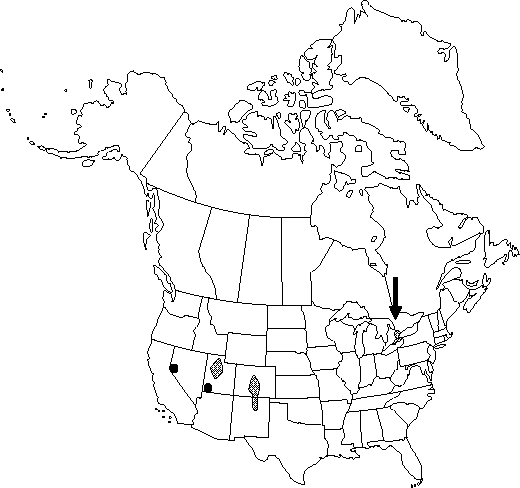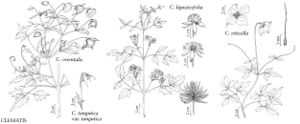Clematis orientalis
Sp. Pl. 1: 543. 1753.
Stems climbing, 2-8 m. Leaf blade pinnately 5-7-foliolate, proximal leaflets sometimes 3-foliolate; leaflets lanceolate to elliptic or ovate, usually 2-3-lobed proximally, 1-5.5 × 0.5-3.5 cm, margins entire or coarsely few-toothed; surfaces at least abaxially pubescent, glaucous. Inflorescences axillary, sometimes terminal, 3-many-flowered cymes or flowers solitary. Flowers bisexual; pedicel (0.5-)1-11 cm; sepals wide-spreading and recurved, greenish yellow, ovate-lanceolate to elliptic, 0.8-2 cm, length ca. 2.5 times width, margins densely pubescent, abaxially and adaxially pubescent or abaxially glabrous; stamens 20-40; filaments pilose proximally; staminodes absent; pistils 75-150. Achenes turgid, not conspicuously rimmed, pilose; beak 2-5 cm.
Phenology: Flowering summer–fall.
Habitat: Roadsides, other secondary habitats, open woods
Elevation: 0-2600 m
Distribution

Introduced; Ont., Colo., Nev., N.Mex., Utah, native to Eurasia.
Discussion
Clematis orientalis has been reported from Idaho; it probably can be expected elsewhere.
This species has been divided by C. Grey-Wilson (1989) into five varieties, partly correlated with their distribution in Asia. Naturalized plants in North America seem best referred to C. orientalis var. robusta Grey-Wilson, native to Afghanistan.
Although Clematis orientalis has been naturalized in the Rocky Mountains since the late nineteenth century, it has spread especially rapidly since ca. 1975, becoming weedy and, in some localities, constituting a threat to young trees and native shrubby and herbaceous species.
Selected References
None.
